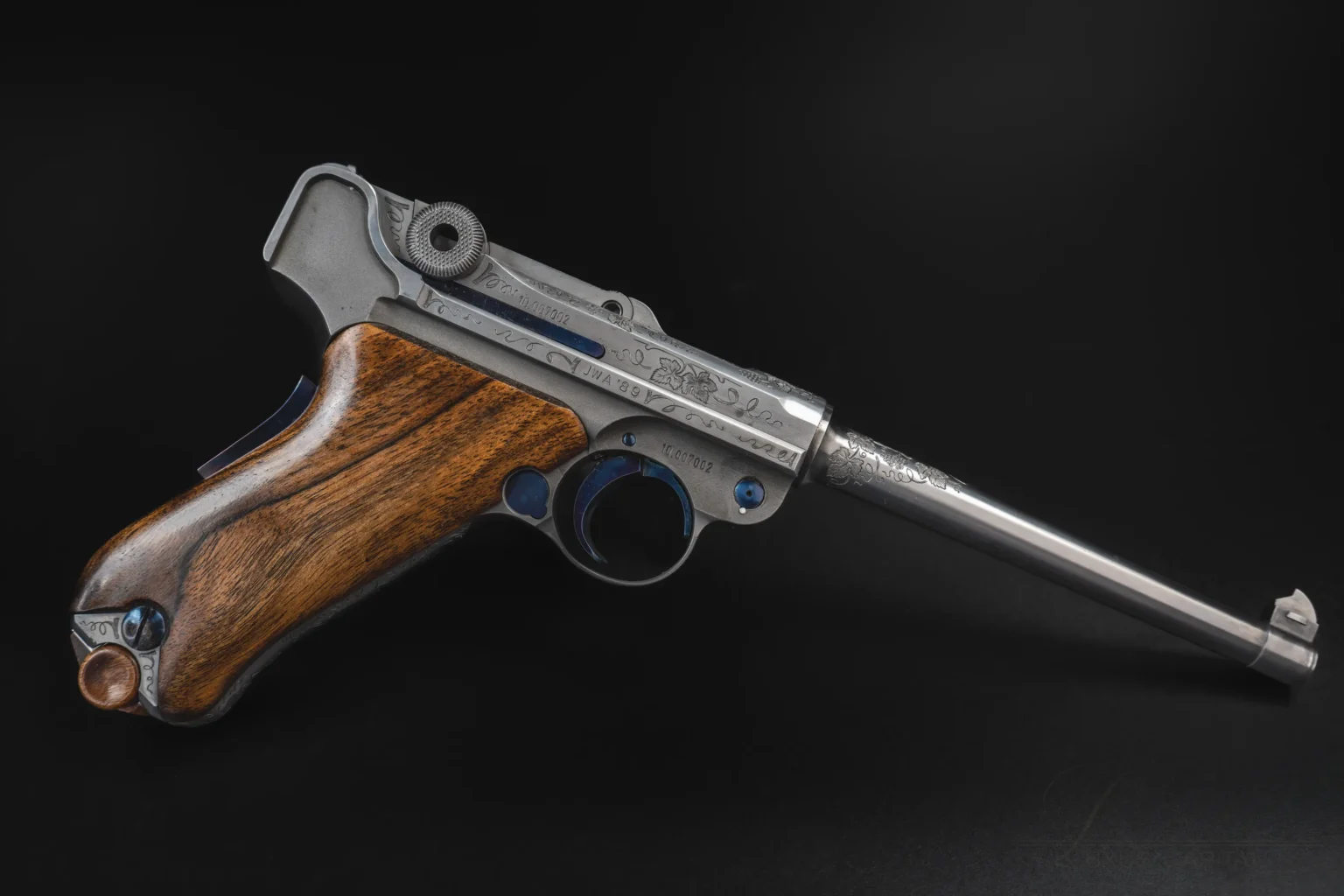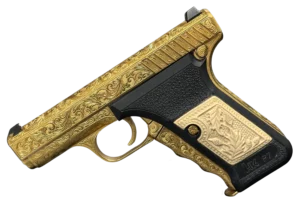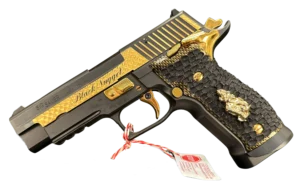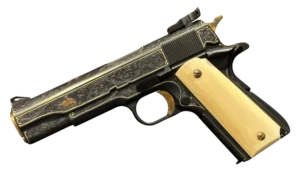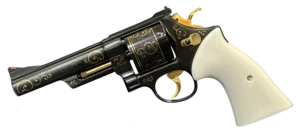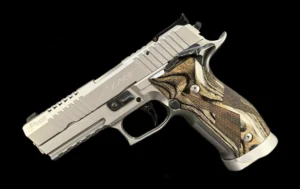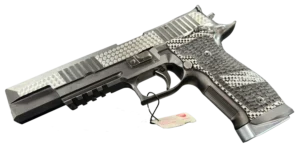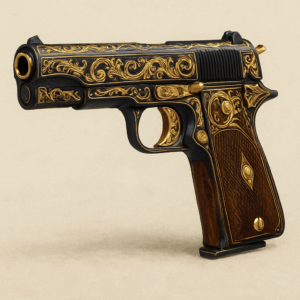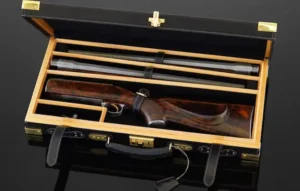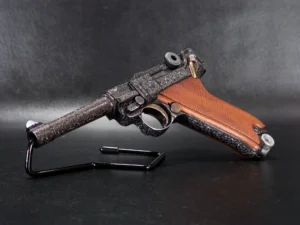Key Takeaways:
- The Luger P08 wasn’t just ahead of its time — it helped define what “modern” in modern handguns even meant: With its toggle-lock action, natural grip angle, and first use of the now-ubiquitous 9mm Parabellum cartridge, the Luger didn’t just participate in history — it helped steer it.
- It’s not just a weapon — it’s a story you can hold: Whether it was passed down through trench warfare or picked up by collectors decades later, every Luger has a past. That connection to real people, real conflict, and real craftsmanship makes it more than just a gun.
- It’s a mechanical masterpiece… but it demands your respect: Between its intricate toggle mechanism and precise tolerances, the Luger rewards careful handling and regular maintenance. It’s not the kind of gun you abuse — it’s the kind you learn from.
Let’s be real—some guns are just guns. Tools, nothing more. They do their job, collect some scratches, maybe make it into a dusty case someday. And then… there are firearms like the Luger P08. The ones that live a dozen lives, carry the weight of nations, and somehow still feel like works of art.
The Luger isn’t just a pistol. It’s a symbol. Of engineering brilliance. Of war. Of a very specific, oddly beautiful form of precision that could only come out of early 20th-century Europe. It’s sleek, almost futuristic—even by today’s standards. But more than that, it helped shape how we think about handguns, combat, and even what makes a firearm “modern.”
This isn’t some soulless deep dive into stats and dates (though, don’t worry, we’ll get technical where it counts). This is the story of the Luger—how it came to be, where it went, and why people are still talking about it more than a century later.
A Gun Born on the Edge of Change
The year was 1900. Think about that for a second. Just before the Wright brothers took flight. Before the Model T. Before the world blew itself apart with mechanized warfare. And in the middle of that electric, turbulent era, Georg Luger introduced a semi-automatic pistol unlike anything people had really seen before.
It started out chambered in 7.65mm, which, let’s be honest, wasn’t quite enough sauce for serious military use. But the design? It turned heads. The toggle-lock action looked like something from science fiction. The grip felt… right. Like it was made for the human hand instead of a block of metal.
And the German military took notice. The Navy adopted it first in 1904. Four years later, the Army followed suit. That’s where the “P08” designation comes from—1908, the year it became standard issue.
From there, it exploded into military history like a bolt from the blue.
Georg Luger: The Guy Behind the Gun
Georg Luger wasn’t some eccentric tinkerer. He was a straight-up engineering savant. Austro-Hungarian by birth, but with a mind that belonged more to the future than any one nation.
What made Luger different? He knew how to make weird ideas actually work.
The toggle-lock mechanism was his baby. It was bold, delicate, and almost unnecessarily complicated—but it worked like a charm. And it made the Luger instantly recognizable. That angled grip? Also him. Luger understood that a pistol shouldn’t just fire well—it should feel natural, even graceful.
He didn’t invent the semi-auto pistol, but he made it elegant. Reliable. Desirable. The P08 was the moment semi-automatic handguns arrived in force—and Georg Luger was the one who opened the door.
Let’s Talk Toggle-Lock (Because It’s Kinda Wild)
If you’ve ever field-stripped a Luger, you know: it’s a mechanical fever dream.
Instead of a simple slide like most modern pistols, the Luger’s action uses a toggle—think of a sideways hinge, almost like a human elbow. When you fire, the barrel and toggle move backward together. Then the toggle hits a cam, bends at the joint, and opens up like a jackknife. Out goes the spent case. New round gets chambered. Boom—reset.
It’s weirdly mesmerizing.
The advantages? Surprisingly legit:
- Smooth cycling. Like, buttery smooth.
- Tight tolerances. Which made it accurate as hell—when kept clean.
- Fast action. For its time, it was lightning quick.
But it wasn’t perfect. That same precision that made it special also made it fussy. Mud, grit, cold? The Luger didn’t love those. Still, for officers or elite units in controlled environments, it was a revelation.
And honestly? It’s just… cool. It feels alive when you rack the toggle. Like the gun is thinking.
Through Fire and Blood: The Luger in Combat
The Luger didn’t stay pretty for long. As soon as Germany adopted it, it was heading to war.
In World War I, it became the sidearm of the German military. And let’s be clear—trench warfare was a nightmare. Mud, rats, gas, death everywhere. But the Luger held up remarkably well in that mess. Soldiers trusted it. It wasn’t just a status symbol; it was a lifeline.
By World War II, the pistol had taken on a kind of mythic aura. Officers prized it. Soldiers respected it. And Allied troops? They hunted for them. If you were an American GI and managed to snag a Luger off a fallen officer, you were basically the envy of your unit.
Even after the Walther P38 started replacing it in official issue, the Luger stuck around. It was too iconic to just disappear. Too beloved. Too distinct.
The Birth of 9mm (Yep, Luger Did That Too)
Here’s something a lot of people don’t realize: the 9mm Parabellum—the most common handgun cartridge in the world today? That’s also a Luger thing.
Georg designed it specifically for this pistol. “Parabellum” is Latin for “prepare for war,” and honestly, has a more metal name ever existed for a bullet?
Originally, the Luger used 7.65x21mm rounds. But the German military wanted something punchier. So Luger upped the ante with the 9x19mm round. More stopping power, flatter trajectory, easier logistics. And the rest, well… we’re still living in the age of 9mm.
It’s wild to think about, but every time you pick up a Glock 17 or a SIG P226, you’re carrying a piece of Georg Luger’s vision. That little brass case? His legacy.
A Collectible with a Story to Tell
Fast forward to now, and the Luger P08 has left the battlefield and entered a new realm: the collector’s cabinet.
But not just as a curiosity. People collect Lugers with reverence. They’re not just guns—they’re artifacts. And like anything collectible, details matter. The markings. The unit stamps. Whether it was a Navy issue or an Artillery model with the extended barrel and stock.
Prices can get… intense. A pristine, all-matching-number Luger with wartime provenance? You’re easily looking at several thousand dollars. Add in a rare variation or factory oddity and you’ve got a grail-tier item.
But money isn’t really the point.
Holding a Luger is like shaking hands with history. You feel the weight of everything it’s seen. The elegance. The dread. The complexity. It’s a connection to a past that feels eerily present.
Form Meets Function—And Shapes the Future
Here’s the thing about the Luger: even though it’s over a hundred years old, its fingerprints are all over modern handguns.
Start with the grip angle. Luger nailed it. That natural point-of-aim feel? Glocks imitate it. So do a bunch of other pistols. It’s weird how many guns today are still trying to feel like a Luger without quite saying it out loud.
And then there’s the build quality. Lugers were made like fine watches. Hand-fitted. Tight tolerances. It set a benchmark for what precision machining in firearms could look like. You can see echoes of that craftsmanship in high-end 1911s, SIGs, even the fancier HKs.
Even the idea of the semi-automatic service pistol—reliable, fast, easy to carry—was solidified in large part because of the Luger’s early success. It showed that you didn’t need a revolver to get dependable performance in the field.
And while the toggle-lock mechanism didn’t survive into mass production elsewhere, its audacity inspired other designers to take risks. To try new things. To get weird, if that’s what it took to make a great gun.
Keeping It Alive: Maintenance and Care
Let’s talk practicality for a second. Lugers are picky. They need love. You can’t just toss them in a safe and expect them to stay happy.
Cleaning is a must. Especially around the toggle system—it’s full of little springs and surfaces that don’t take kindly to grime. Disassembly isn’t rocket science once you learn it, but the first time? Yeah, you’ll sweat a little.
And the holsters—oh man, the holsters. Original leather rigs are collector’s items in their own right. Thick, stiff, worn smooth by decades of use. They were purpose-built for the Luger’s unique shape, and finding one in decent condition is like finding an old saddle that still fits like a glove.
If you’re lucky enough to own a Luger, you don’t just shoot it. You care for it. Preserve it. Honor it, even if that sounds a little dramatic.
Because, honestly, it deserves it.
The Legacy That Refuses to Die
There’s something poetic about the Luger. It was born at the dawn of modern warfare and walked through two world wars without flinching. It’s beautiful and brutal all at once. A machine meant for violence that somehow became a symbol of craftsmanship and history.
And maybe that’s why it still grabs us.
Because it’s not perfect. It’s quirky. Fragile in the wrong hands. Over-engineered, maybe. But that’s the magic of it. It’s human. It tells a story—of design, of war, of memory.
So if you ever get the chance to hold one, take a second.
Look past the steel and the toggle. Think about where it’s been. The hands it passed through. The wars it saw. And the strange way it still feels… alive.
Frequently Asked Questions
What is the Luger P08?
The Luger P08 is a semi-automatic pistol known for its ergonomic design and toggle-lock mechanism, revolutionizing early 20th-century firearm technology.
Who designed the Luger P08?
It was designed by Georg Luger, an Austro-Hungarian engineer, in the early 1900s.
What cartridge does the Luger use?
Initially chambered in 7.65mm, it became popular with the 9mm Parabellum round, also developed by Luger.
What is unique about its mechanism?
The toggle-lock mechanism allows for smooth cycling and quick reloading, making it mechanically innovative.
What role did it play in military history?
Adopted by the German military in 1904 and widely used in both World Wars, it became a symbol of German engineering and combat prowess.
Why is it a popular collector’s item today?
Its history, craftsmanship, and variants, like the Artillery and Navy models, make it highly sought-after among collectors.


